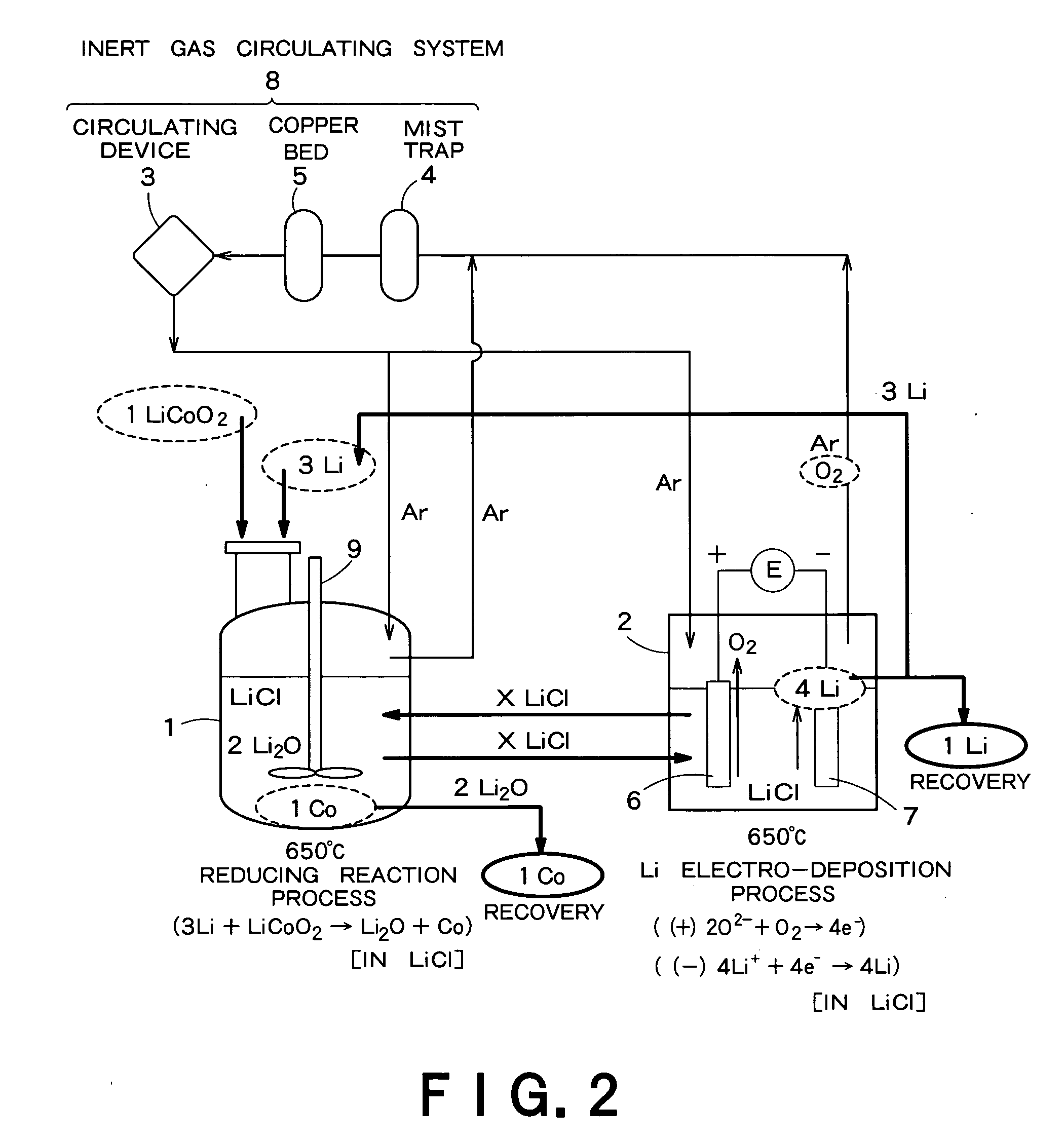Method and apparatus for recycling electrode material of lithium secondary battery
a lithium secondary battery and electrode material technology, applied in metal-working apparatus, electrical equipment, electromechanical processes, etc., can solve the problems of inefficiency in recovering lithium, large energy consumption of the carbon burning process, and long time on the order of 2 hr, so as to save equipment costs and operating costs, save energy loss resulting from heating and cooling, and save equipment costs.
- Summary
- Abstract
- Description
- Claims
- Application Information
AI Technical Summary
Benefits of technology
Problems solved by technology
Method used
Image
Examples
Embodiment Construction
[0030] Referring to FIG. 1, a method of recycling an electrode material of a lithium secondary battery in a preferred embodiment according to the present invention for recovering valuable metals from the material of the electrode of a lithium secondary battery heats collected lithium ion batteries M1 at a comparatively low temperature in the range of 100° C. to 150° C. for about 1 hr to remove resin packages in step S1 as a preparatory process. Then the thus heated lithium ion batteries are shredded into shreds in step S2. The shreds are sieved to sieve out small particles in step S3. Then the sieved out small particles are heated at a comparative high temperature in the range of 300° C. to 500° C. for about 1 hr to remove a binder used for forming electrodes in step S4. Then they are sieved by a vibrating sieve in step S5 to sort the heated particles into metals M2, such as nickel, copper and aluminum, and a mixture M3 of lithium cobaltate (LiCoO2) and electrode carbon C.
[0031] Th...
PUM
| Property | Measurement | Unit |
|---|---|---|
| voltage | aaaaa | aaaaa |
| melting point | aaaaa | aaaaa |
| melting point | aaaaa | aaaaa |
Abstract
Description
Claims
Application Information
 Login to View More
Login to View More - R&D
- Intellectual Property
- Life Sciences
- Materials
- Tech Scout
- Unparalleled Data Quality
- Higher Quality Content
- 60% Fewer Hallucinations
Browse by: Latest US Patents, China's latest patents, Technical Efficacy Thesaurus, Application Domain, Technology Topic, Popular Technical Reports.
© 2025 PatSnap. All rights reserved.Legal|Privacy policy|Modern Slavery Act Transparency Statement|Sitemap|About US| Contact US: help@patsnap.com



